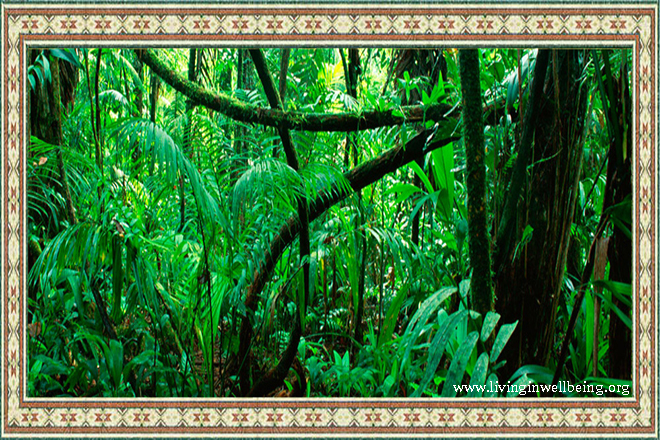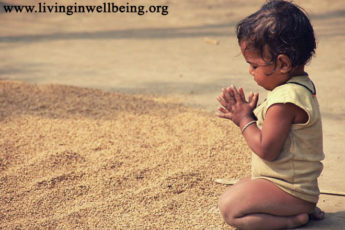
Ayahuasca - The Visionary and Healing Plant from the Amazon - Part 1
By: Howard G Charing
After being virtually ignored by Western civilization for centuries, there has been a huge surge of interest in Ayahuasca recently. There is a growing belief that it is a kind of ‘medicine for our times’, giving hope to people with ‘incurable’ diseases like cancer and HIV, drug addictions and inspiring answers to the big ecological problems of modern civilization.
Spirituality is at the centre of the Ayahuasca experience. Purification and cleansing of body, mind, and spirit in a shamanic ceremony can be the beginning of a process of profound personal and spiritual discovery and transformation. This process can continue indefinitely even if one never drinks Ayahuasca again. One thing is sure, and that is that every person gets a unique experience. We believe that by seriously looking at the way Ayahuasca is used we can improve our life experience and benefit more from this medicine.
Ayahuasca is the jungle medicine of the upper Amazon. It is made from the ayahuasca vine ( Banisteriopsis Caapi) and the leaf of the Chacruna plant (Psychotria Viridis). The two make a potent medicine, which takes one into the visionary world. The vine is an inhibitor, which contains harmala and harmaline among other alkaloids, and the leaf contains vision-inducing alkaloids. As with all natural medicines, it is a mixture of many alkaloids that makes their unique properties. For example, Peyote, the cactus used by the North Native Americans, is said to contain 32 active alkaloids, so when one of those alkaloids, mescaline (LSD) is synthesised in a laboratory, contrary to popular opinion, the result is not at all the same.
The oldest know object related to the use of ayahuasca is a ceremonial cup, hewn out of stone, with engraved ornamentation, which was found in the
Pastaza culture of the Ecuadorian Amazon from 500 B.C. to 50 A.D. It is deposited in the collection of the Ethnological Museum of the Central
University (Quito, Ecuador). This indicates that ayahuasca potions were known and used at least 2,500 years ago.
Ayahuasca is a name derived from two Quechua words: aya means spirit, ancestor, deceased person, and huasca means vine or rope, hence it is known as vine of the dead or vine of the soul. It is also known by many other local names including yaje, caapi, natema, pinde, daime, mihi, & dapa. It plays a central role in the spiritual, religious and cultural traditions of the Indigenous and Mestizo (mixed blood) peoples of the upper Amazon, Orinoco plains and the Pacific coast of Colombia and Ecuador.
The plants are collected from the rainforest in a sacred way and it is said that a shaman can find plentiful sources of the vine by listening for the 'drumbeat' that emanates from them. The mixture is prepared by cutting the vines to cookable lengths, scraping and cleaning them, pounding them into a pulp. Meanwhile the Chacruna leaves and picked and cleaned.
So what, perhaps, is the advantage of ayahuasca over other disciplines? In the words of Padrino Alex Polari de Alverga of the Santo Daime Community in Brazil, "Daime (ayahuasca) is basically a shortcut, it's as if we had been travelling down the same highway as the rest of humanity, but then, in order to arrive at our destination more quickly we took a side road. When taking such a shortcut, however, we must be very careful and clear-minded. It is a shortcut that leads us to truth, but only if we follow in the footsteps of the Masters who have preceded us."
Medicines like ayahuasca can help us along our path but we still have to do the work ourselves. My experience is that these kind of allies can help us open the doors of perception, but what we do when we get there is entirely our own challenge.
To understand ayahuasca in the local context, one cannot avoid taking a look at the ecological environment, such as the forest, cultural environment and indigenous cultures. This has structured the cultural content of ayahuasca.
There are many legends and myths about ayahuasca, one the more romantic is from the Shipibo people who live up the river in the heart of the jungle in the Peruvian Amazon.
This tale is centered around women, more so than men, as they look after the children and their health, whilst the men are out hunting and fishing. Men are more interested in plants that aid their inner spirits whilst hunting. Women are more interested in plants that will allow their children to grow.
There was one particular woman who was very interested in plants, who liked to pick the leaves of different plants. She would then crush the leaves into a pot and soak them in water over night. She would then take a bath every morning before sunrise (the way to find out about various plants and their effects is to bathe in them). She bathed in them every morning until she had a dream. In her dream a woman came and said, “why are you bathing every day?”
She answered, “I am doing this as I want you to teach me.” The other woman said, “You must seek out my uncle, his name is Kamarampi. I will show you where to find him”. The woman led the other woman to her uncle. The uncle showed her how to mix the leaves of the chacruna, which was a bush she had taken leaves from to bathe in. He showed her how to prepare the brew of Ayahuasca, he told her to go and tell the people the knowledge of how to use the brew. The Indigenous people past and present have taken Ayahuasca to enable them to focus on other dimensions. One example: - To enable them to be more successful on a hunting trip they would contact the Mother spirit of certain species, through the Ayahuasca. The hunt would be more successful.
One of the many mysteries surrounding Ayahuasca is how the vine became to be used with the Chacruna leaves as although they both come from the same soil but always grow apart otherwise the ayahuasca winds around the Chacruna and kills it. No one knows this but we get a clue from how the shamans interact with the plant. Javier Arevalo a shaman from the Peruvian Amazon told us “ in the old days his grandfather and uncles used to sit around after taking ayahuasca and he said that ayahuasca was originally taken alone and in the visions they saw that Chacruna was missing. Ayahuasca would say I am the doctor that gives the vision. His grandfather responded, how can we find this plant? The response in the vision was, you can find it by turning two corners. So they went around two corners and found a bush which attracted them which was Chacruna i.e. the ayahuasca showed them.
This is a fundamental principle, in the visions it is the spirit doctor of ayahuasca which tells them what is wrong with their patient, what medicine they need, or who has caused the illness or malaise.
The Icaros
Integral to the ceremony are the chants that the shaman sings. These are known as Icaros, and the chant will direct the nature of the ceremony or visionary experience for the group and for individuals as the shaman during the ceremony will chant specific Icaros for that person’s needs.
The words of the chants are symbolic stories telling of the ability of nature to heal itself. For example the crystalline waters from a stream wash the unwell person, while coloured flowers attract the hummingbirds whose delicate wings fan healing energies etc. You might see such things in your visions but the essence which cures you is perhaps more likely to be the understanding of what is happening in your life, allowing inner feelings to unblock so that bitterness and anger con change to ecstasy and love. To awaken from the ‘illusion of being alive’ is to experience life itself.
There are several different kinds of Icaros, at the beginning of the session. Their purpose is to provoke the mareacion or effects, and, in the words of Javier Arevalo, ‘to render the mind susceptible for visions to penetrate, then the curtains can open for the start of the theatre’.
Other Icaros call the spirit of Ayahuasca to open visions ‘as though exposing the optic nerve to light’. Alternatively, if the visions are too strong, the same spirit can be made to fly away in order to bring the person back to normality.
There are Icaros for calling the ‘doctors’, or plant spirits, for healing, while other Icaros call animal spirits, which protect and rid patients of spells.
Healing Icaros may be for specific conditions like manchare, which a child may suffer when it gets a fright. The spirit of a child is not so fixed in its body as that of an adult, therefore a small fall can easily cause it to fly. Manchare is a common reason for taking children to ayahuasca sessions.
After being virtually ignored by Western civilization for centuries, there has been a huge surge of interest in Ayahuasca recently. There is a growing belief that it is a kind of ‘medicine for our times’, giving hope to people with ‘incurable’ diseases like cancer and HIV, drug addictions and inspiring answers to the big ecological problems of modern civilization.
Howard G. Charing, is an international workshop leader on shamanism. He has worked some of the most respected and extraordinary shamans & healers in the Andes, the Amazon Rainforest, and the Philippines. He organises specialist retreats to the Amazon Rainforest. He is the author of the best selling book, Plant Spirit Shamanism. Visit the website for info about our Andean & Amazon Ayahuasca Retreats
Article Source: http://www.positivearticles.com. PositiveArticles.Com does not vouch for or necessarily endorse the contents of this article.
Article Source : http://www.positivearticles.com/Article/Ayahuasca---The-Visionary-and-Healing-Plant-from-the-Amazon---Part-1/32676
View More About Ayahuasca
For More Details About Ayahuasca [1]
For More Details About Ayahuasca [2]
For More Details About Ayahuasca [3]
For More Details About Ayahuasca [4]
For More Details About Ayahuasca [5]












